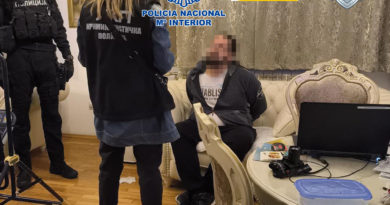The Spanish Civil Guard recovers 119 extraordinarily valuable archaeological pieces
The Civil Guard of Seville, has concluded the Plotina operation, with the arrest of 2 people who are charged with the alleged commission of crimes against Historical Heritage, smuggling and reception, and the recovery of 119 extraordinarily valuable archaeological pieces. This operation is in turn part of the international operation led by the Civil Guard PANDORA VII, with the support of Europol and Interpol, and which is aimed at combating the illicit trafficking of cultural property.
Operation Plotina
After numerous interviews with sources, meetings with collectors, attendance at forums specialized in works of art trades, and periodic inspections of premises and establishments for the sale of cultural property, it became known of the existence of a married couple with a police record who could be dedicating themselves to internal trade in cultural goods on the black market.
Within the hermetic and complex world of the art market, it was possible to verify that those investigated led a normal life, without great luxuries, acting at different times of the day in order to go completely unnoticed and to be able to introduce the historical goods into the illicit market, obtaining them from this way great economic benefits. After several intense months of operations, a storage room was discreetly located in the town of Baena (Córdoba) where some of the looted archaeological pieces could be stored. Once this point has been confirmed, three entries and searches are carried out in said town and two people are arrested.
The categorization of the pieces found is very diverse: from absolutely exceptional sculptures, architectural elements or ceramics to ancient Greek, Ibero-Roman and Roman coins of exotic rarity. Regarding the pieces of sculpture seized, the Roman female marble portrait-bust is the most important of this group, being a unique and absolutely exceptional piece, of artistic quality similar to those exhibited in the great museums such as the Louvre or the Capitoline Hills. from Rome. It is a private portrait from the first third of the 2nd century, following portrait models of imperial princesses who, due to the type of hairstyle, are similar to those of Salonina Matidia, Trajan’s niece and mother of Vibia Sabina, Hadrian’s wife.
It is also worth noting the discovery of the late-antique Corinthian limestone capital, dating from the 7th century. This architectural element responds to a typology represented by very few examples. Its carving is of exceptional quality. As for the group of coins, the seizure of a silver republican Roman Roman coin, after the year 44 BC, stands out in the same way. to pay his army in the war against Octavio.
Very rare coinages, of which very few copies are preserved. Once intervened and recovered, the sets of pieces have been transferred to the Archaeological Museum of Córdoba for their custody, conservation and expert opinion. In said operation, the Council of Tourism, Culture and Sports of the Junta de Andalucía has collaborated through 2 expert archaeologists from the Archaeological Museum of Córdoba.
Those detained and investigated have been brought to justice for the alleged commission of the crimes of illegal trafficking of archaeological goods belonging to the Spanish Historical Heritage, smuggling and crimes of receiving archaeological material from looting. The operation called PLOTINA PANDORA VII and carried out by agents of the Heritage Team of the Organic Unit of the Judicial Police of Seville in collaboration with the Civil Guard Post of Baena (Córdoba), has meant a great advance in the fight against illicit trafficking of cultural property after the recovery of 119 archaeological pieces of great potential and patrimonial relevance.
Pandora Results VII
In reference to the development of the Pandora VII operation, which Spain leads internationally through the Civil Guard, it has concluded with 60 people arrested, 237 investigated and 11,049 seized cultural assets. 1,079 of these assets have been intervened by the Civil Guard, with 19 detainees and 58 investigated. Most of these goods are religious or liturgical objects, old coins, sculptures or ceramic pieces.




